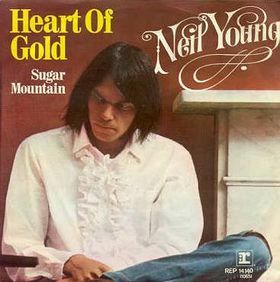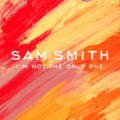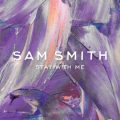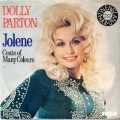 Neil Young’s song, Heart of Gold, is his one and only No. 1 single in the U.S. The Canadian singer-songwriter released the track on his 1972 album Harvest. Billboard ranked it as the No. 17 song for 1972 and, in 2004, Rolling Stone ranked it No. 297 on their list of the 500 greatest songs of all time. Today we’ll learn an easy arrangement of the Heart of Gold chords for beginning guitar.
Neil Young’s song, Heart of Gold, is his one and only No. 1 single in the U.S. The Canadian singer-songwriter released the track on his 1972 album Harvest. Billboard ranked it as the No. 17 song for 1972 and, in 2004, Rolling Stone ranked it No. 297 on their list of the 500 greatest songs of all time. Today we’ll learn an easy arrangement of the Heart of Gold chords for beginning guitar.
Useful links
Song Specs
Title: Heart of Gold
Artist: Neil Young
Songwriters: Neil Young
Album: Streetwise
Key: Em
Tempo: 80
Chord Progression: Em–C–D–G
Accompaniment Technique: First-Position Chords and Fingerstyle Strumming
Playing Tips
Here are some helpful tips to keep in mind that will help you learn the tune faster while giving you some ideas for how to approach performing it. I provided some useful links above and I’ll take you through the Heart of Gold chords, accompaniment patterns, song form, and a chord chart. Everything you need to get started playing this tune.
Heart of Gold Chords
| Chords | Em | C | D | G |
| Progression | i | bVI | bVII | III |

Heart of Gold is one of those must-know tunes that everybody loves and enjoys singing along to. A little known fact is that, on the Neil Young original, James Taylor and Linda Ronstadt provided the backing vocals.
This song is in the key of Em. If the key is too high for those of you singing along then I suggest that you tune down. If it’s too low then you can use a capo. But, the song needs to be played using the Em chords otherwise it begins losing its charm.
You can approach this from a finger-plucking and finger-strumming standpoint. We’re gonna use a pick and perform a lot of the same techniques. However, I do encourage to approach the song however you see fit. These are just my suggestions.
Accompaniment Techniques
Strumming
Heart of Gold uses a straightforward approach to strumming. We’ll be using a pick and alternate strumming. The technique is basic down and up strums and the rhythm is largely based on eighth notes.
My main suggestion is to add some anticipations and create an organic, human feel. It’s very easy to get lulled into an eighth-note, down-and-up pattern that can feel and sound boring.
Fingerstyle
I’ve included some tips on fingerstyle playing which is how I normally approach this tune. For purposes of the video I stayed true to Neil Young’s interpretations. But, for you more adventurous types, here’s what I suggest.
My approach to fingerstyle accompaniment can be broken down into four basic techniques. I use a fingerstyle technique that I’ll describe below. But, the basic idea is that my thumb plays the bass note (as the left hand of the piano would) and my index, middle, and ring fingers pluck or brush the top part of the chord (as the right hand of the piano would).
Here’s the basic techniques that I use:
- Block Chord: Pluck all of the strings (well, the four that you’ll be playing) at the same time with the same rhythm as the recording.
- Bass Chord: By separating the thumb and fingers we can create more of a rhythmic feel. Aim to use the thumb on the downbeat (think of the bass drum) and then freely add the fingers (think of snare and hi-hat). This creates a percussive and pianistic effect.
- Arpeggios: Individually pluck the notes of the chord. I usually do this to answer the vocal. The previous two techniques I use for supporting the vocal. Otherwise, it may sound too busy and take away from the song’s character. This also works well during instrumental sections.
- Finger Strums: I use the I-M fingers in the same way that I use a pick except that I brush the strings lightly. This creates more energy and motion. Perfect for increasing the intensity of the song, especially during the chorus.
Basic Fingerstyle Technique
“Heart of Gold” is perfect for beginning fingerstyle players. The right hand is notated as follows:
- P = Thumb
- I = Index
- M = Middle
- A = Ring
I find that using a pick to strum the chords can be a little too harsh sounding for the mood of this tune. For that reason, I suggest using your fingers to pluck and strum the chords. Let’s begin by assigning the right-hand fingers to certain strings:
- The Thumb (P) plays the bass note:
- 6th string for Em and G
- 5th string for C
- 4th string for D
- The Index (I) is assigned to the 4th string.
- The Middle (M) is assigned to the 3rd string.
- The Ring (A) is assigned to the 2nd string.
- The I-M-A fingers move up a string set for the D chord. Or, you could assign the I-M-A fingers to the 3rd, 2nd and 1st strings right from the beginning.
This is the essence of fingerstyle playing, assigning fingers to specific strings. This way, you don’t need to look at the right hand while playing. Once you get used to it, you can “feel” where you are.
I suggest mixing and matching the accompaniment techniques that I describe above as you see fit or, rather, whatever feels right.
Pulsing
The pulsing technique is a left-hand technique that is used to create a more percussive feel and will help you create the bouncy groove that makes people tap their feet, bob their heads, and shake their booties.
Fret the chord as you normally would. Then, after you strum, release the pressure of your frethand without letting go of the chord position. The trick is to maintain contact with the strings as you pulse. Open chords are tricky to pulse because of the open strings. But, keep at it and you’ll find that it’ll quickly become one of your go-to techniques.
Chord Chart
I’ve included a Heart of Gold chords chart, which is a simple road map that shows you:
- The overall arrangement of the song.
- A section by section breakdown of the song.
- Each chord and how long to play it for.
If you don’t read music, please don’t be intimidated. This is a cheat sheet that can help you get through the tune quickly and easily. I find it indispensable for learning songs and I can also hand it to a seasoned musician and they can follow along without any problems.
Song Form
- Intro: 4-bar section; A 2-measure chord riff that’s repeated. The progression is Em7 for a full measure followed by D for two beats and back to Em for two beats. This chord riff is then repeated..
- Verse: 6-bar section; A 2-measure chord riff that’s repeated three times. The progression is Em–C–D–G with each chord receiving two beats.
- Chorus: 4-bar section that repeats; Em–G–C each receive a full measure. The final measure is a descending bass line for two beats that connects the C to the G.
- Instrumental: 4-bar section that repeats; Bars 1 & 2 are the same as the Verse and Bars 3 & 4 are the same as the Intro..
- Outro: 8-bar section; The first four bars are the same as the Intro. The last four bars are the same as the Chorus and end on the G.
Once you become familiar with chord charts, you’ll never want to go back. It’s just easier to see where you’re going when you have a map. And, it’s especially helpful when you’re not familiar with the song or there’s a section of the song that you don’t remember (Bridges and Interludes are notorious for surprising players and derailing a song’s performance).
This tune has an Instrumental section; however, the chords reflect the Verse (at least for the first two bars, but careful with the last two bars (these reflect the Intro).

Wrap-up
I hope that you’ve enjoyed learning this arrangement of the Heart of Gold chords as much as I did in preparing this lesson for you. If you enjoyed this piece then I suggest that you check out the music of backup singers James Taylor and Linda Ronstadt. Also, Neil Young did some beautiful work with Crosby, Stills, Nash & Young.
Thanks for hangin’ with me and I’ll see you next time.







